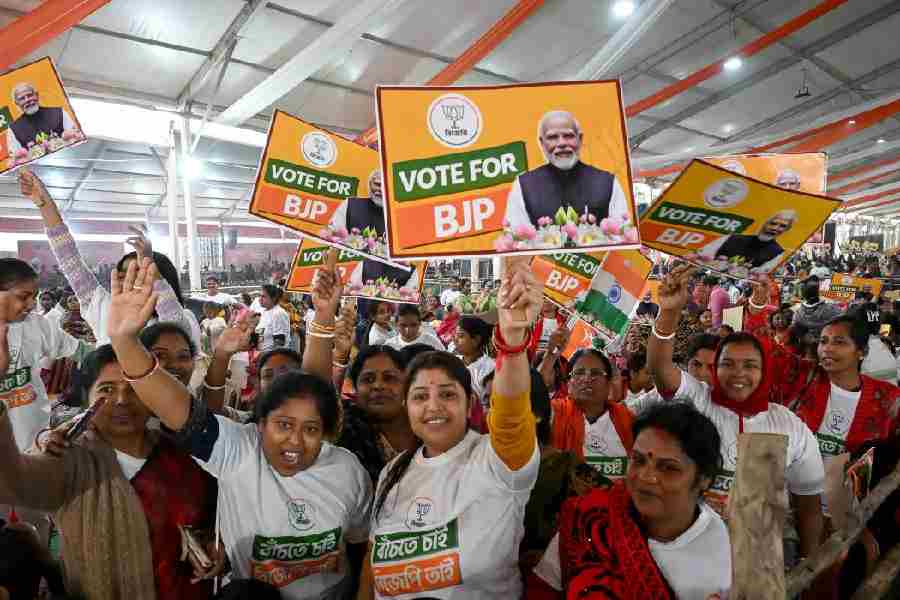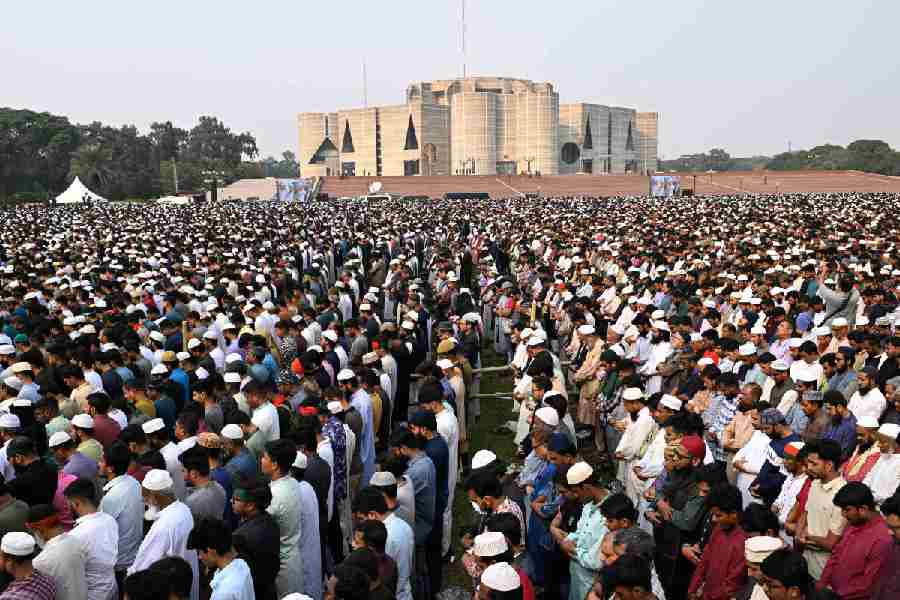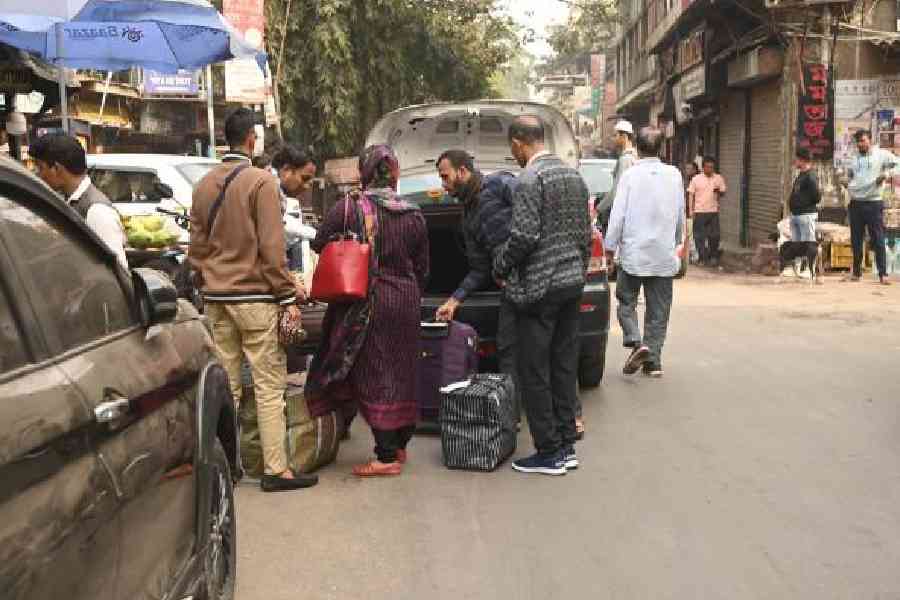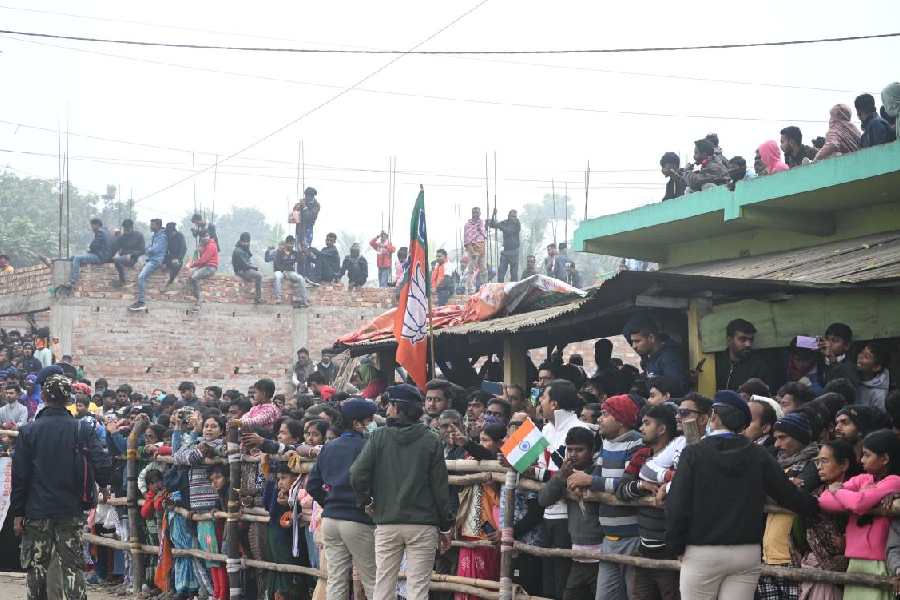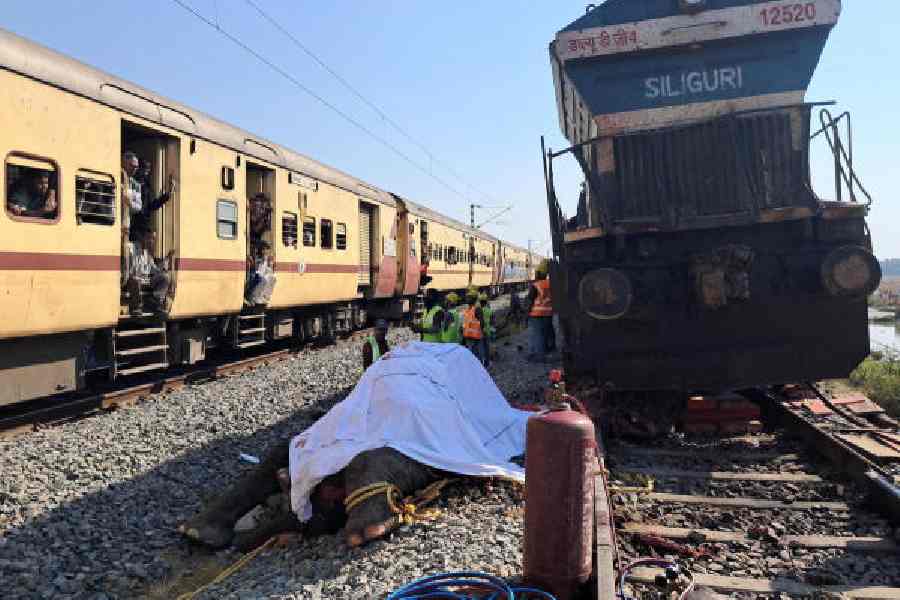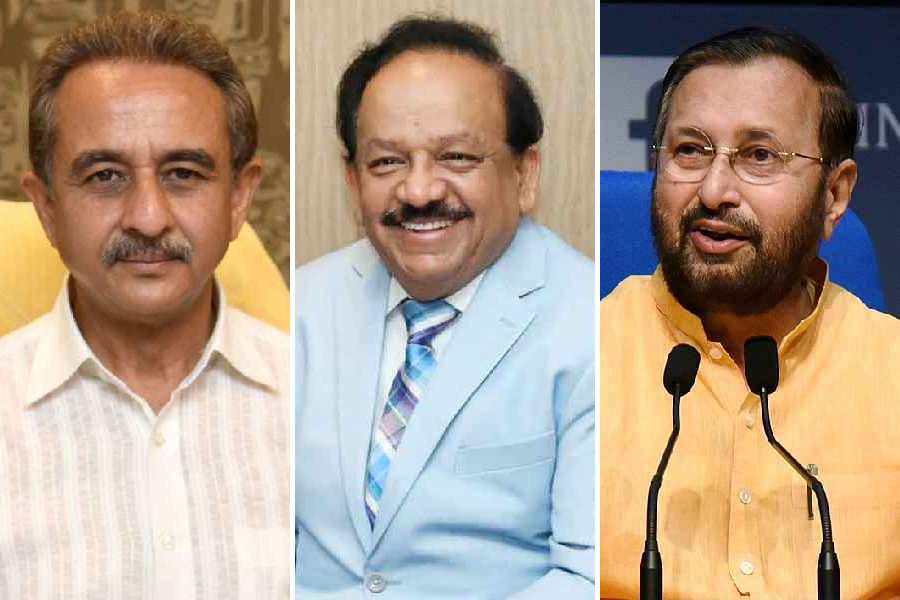 |
| People take part in Brahmeshwar Singh’s funeral in Patna on June 2. Telegraph picture |
Socio-eonomic and political factors are generally taken into account whenever agrarian violence takes place. But the killing of Brahmeshwar Singh “Mukhiya”, the leader of Ranvir Sena, the most dreaded private army of Bihar, on June 1 in Ara town of Bhojpur district, demands something else too.
The geographical feature of the region in which the outfit grew needs to be analysed. Ever since the 1970s, when the Naxalites fled from Bengal and took shelter in several places in Bihar, the region which witnessed maximum number of massacres is the cluster of districts on both sides of the river Sone, which originates in central India and, after passing through Madhya Pradesh, Uttar Pradesh and Bihar, submerges its identity into the river Ganga a few kilometres west of Patna.
Ironically, the districts on both sides of the Sone are considered as the food-basket of Bihar. The chain of canals dug by the British in the late 19th century helped bring about a Green Revolution in the region some decades ago. Till a few years ago, the region was known for three-crop land with even garma dhan (summer paddy) grown by the farmers.
So the districts of Patna, Jehanabad, Gaya and Aurangabad on the eastern side of Sone and Rohtas, Bhojpur, Kaimur and Buxar on the western side often remained in the news for what is called upper caste versus Dalit violence or Ranvir Sena versus CPI (Maoist) or CPI-ML (Liberation) showdowns. The closer the area is to Sone and its canals, more are the incidents of violence. For example, western Jehanabad, which has a much more fertile land and is close to Sone and its canal system, saw more gruesome carnages than the eastern half of the same district. Almost similar is the situation with Bhojpur on the other side of Sone.
After the construction of dams over Sone in Madhya Pradesh and Uttar Pradesh, the flow of water in the lower riparian state of Bihar has considerably reduced. So the land is not yielding as much profit as it used to in the past.
This entire region falls between Ganga in the north and Grand Trunk Road in the south. In between runs Grand Chord and Howrah-Delhi Main Line. So the mobility was always high. Thus, the social awareness grew much earlier than in the rest of Bihar. With Patna, the centre of political power, falling within this region, the importance of what was then called Central Bihar was always more than elsewhere. It is in this part of Bihar that Swami Sahajanand Saraswati launched his peasants’ movement way back in the 1930s. Though he was born in a Bhumihar family of Ghazipur (UP), he set up his ashram at Bihta, a block on the eastern bank of Sone in Patna district. He had established All India Kisan Sabha to espouse the cause of farmers.
More than half a century later, Ranvir Sena, also essentially a Bhumihar dominated private army, has been engaged in quite a different type of activity. In the last two decades, it has been involved in the massacre of hundreds of Dalits. On June 1, its founder was gunned down in the town of Ara, not far away from the western bank of Sone.
This part of Bihar has some similarity with Punjab, where too proper canal systems and irrigation network helped bring about a Green Revolution. Unlike eastern Bihar, north Bengal and the Northeast, the annual rainfall is less. So flood and over-irrigation are not perennial problems. Besides, Sone is not a snow-fed Himalayan river which causes devastation as is the case in north Bihar.
As the Sone is very wide — in places three kilometres or more — it provides hideouts to various outfits to take shelter. It becomes difficult for the police to chase the criminals in the dry riverbed in the non-monsoon season. Thus, it ended up becoming a river of sorrow in a different way.


